Recent Water Damage Posts
Water Damage Prevention in High-Risk Areas: Basements, Attics, and Crawl Spaces
10/23/2023 (Permalink)
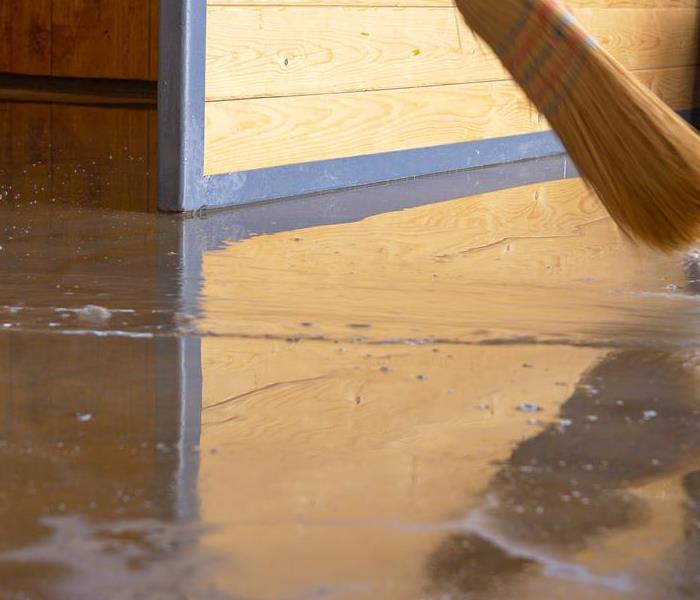 Prevention is key to ensure your home is free from a water loss.
Prevention is key to ensure your home is free from a water loss.
Water damage can wreak havoc on our homes, causing structural damage, mold growth, and costly repairs. Certain areas of our homes are more susceptible to water damage, namely basements, attics, and crawl spaces. These areas are often overlooked when it comes to preventive measures, making them prime targets for water infiltration. In this blog post, we will discuss effective strategies to prevent water damage in these high-risk areas.
Basements
Basements are notorious for water intrusion issues due to their below-ground level and proximity to groundwater. Here are some preventive measures to protect your basement:
- Ensure proper exterior grading around your home's foundation. The ground should slope away from your foundation, allowing rainwater to drain away instead of pooling near the basement walls.
- Foundation Sealing. Regularly inspect your basement's foundation for cracks or gaps that could allow water to seep in. Seal any vulnerabilities using appropriate waterproof sealants or coatings to create a barrier against water infiltration.
- Sump Pump Install a reliable sump pump system in your basement. A sump pump helps drain excess water away from your home's foundation, reducing the risk of basement flooding. Ensure proper maintenance and occasional testing to ensure it functions reliably when needed.
- Interior Waterproofing. Consider waterproofing measures such as installing a waterproofing membrane or sealant on basement walls. This extra layer of protection can help prevent water from entering and damaging your basement, Attics are often susceptible to water damage caused by leaky roofs or condensation issues. Consider the following preventive measures to safeguard your attic.
Roof Inspection and Maintenance
Regularly inspect your roof for any signs of damage, such as missing or damaged shingles. Promptly repair any issues to prevent water from seeping through the roof into the attic. Keep your gutters clean and free from debris to ensure proper water drainage.
Attic Ventilation
Ensure proper ventilation in your attic to reduce condensation buildup. Install vents or fans to promote air circulation, preventing moisture accumulation that could lead to mold growth and water damage. Consider insulating your attic appropriately to prevent temperature fluctuations that may cause condensation.
Inspect Plumbing
Check for any plumbing lines or pipes running through your attic. Insulate these pipes to prevent them from freezing and bursting during colder months, which can cause extensive water damage. Crawlspaces are often neglected areas that can become breeding grounds for moisture-related issues. Here's how you can protect your crawlspace from water damage:
Vapor Barrier
- Install a vapor barrier on the ground in your crawlspace. A vapor barrier helps prevent groundwater or soil moisture from evaporating into the crawlspace area, reducing the risk of dampness and mold growth.
- Proper Ventilation. Ensure adequate ventilation and airflow in your crawlspace to reduce moisture buildup. Install vents or fans in strategic locations to promote air circulation and prevent excess humidity.
- Foundation Insulation: Insulate the walls of your crawlspace to create a thermal barrier. Proper insulation helps maintain consistent temperatures, preventing condensation and reducing the risk of water damage.
Routinely check your crawlspace for signs of leaks, water intrusion, or moisture-related issues. Promptly address any problems to prevent further damage. Prevention is always the best defense against water damage. By implementing these preventive measures in your basement, attic, and crawlspace, you can significantly reduce the risk of water infiltration and protect your home from the damaging effects of water. Regular inspections, timely repairs, and appropriate maintenance are essential to maintaining a dry and safe living environment.
Causes, Risks, and Prevention of Secondary Water Damage
8/10/2023 (Permalink)
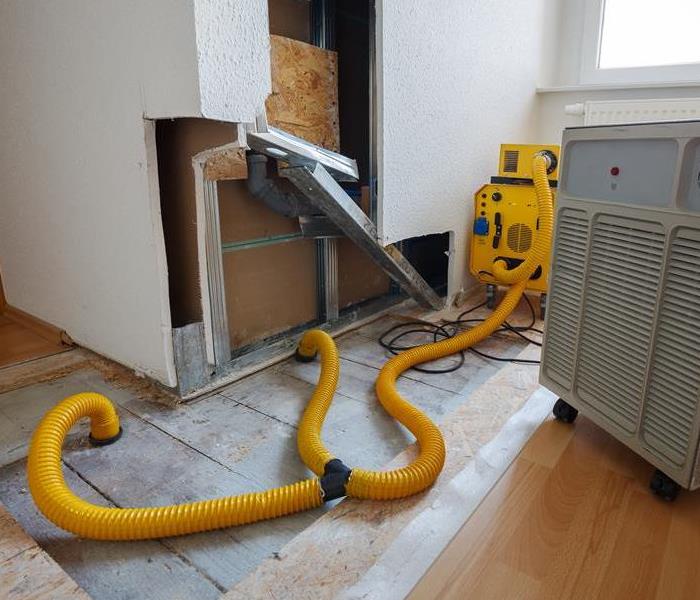 Preventing secondary damages after a water loss is essential to prevent further damage.
Preventing secondary damages after a water loss is essential to prevent further damage.
Water damage is a distressing experience for any homeowner or property owner. It not only causes immediate damage but can also lead to secondary issues that may worsen over time if left unaddressed.
Secondary water damage refers to the additional harm that occurs after the initial water intrusion, often resulting from prolonged exposure to moisture or inadequate restoration efforts. In this blog post, we will delve into the causes, risks, and prevention of secondary water damage to help you understand the importance of comprehensive restoration.
Causes of Secondary Water Damage
Excess moisture and high humidity levels in the affected area can lead to the growth of mold and mildew. These microbial organisms thrive in damp environments and can cause health issues while further damaging the structure and belongings.
Extended exposure to water can weaken the structural integrity of building materials such as drywall, wood, and insulation. This can lead to warping, buckling, and even collapse if the damage is severe. Structural damage requires costly repairs and can compromise the safety of the property.
Risks of Secondary Water Damage
- Increased Restoration Costs
Addressing secondary water damage often requires more extensive restoration efforts and can result in higher costs. Mold remediation, structural repairs, and other corrective measures are not only time-consuming but can also disrupt your daily life or business operations.
- Extended Restoration Timeline
Failure to address secondary water damage promptly can lead to a prolonged restoration process. This can disrupt your living or working environment, causing inconvenience and potential financial losses.
Prevention of Secondary Water Damage
After experiencing water damage, it is crucial to remove standing water and dry out the affected area as quickly as possible. Employ professional water extraction techniques and utilize high-powered drying equipment to mitigate moisture and humidity.
Ensure that all affected surfaces, including walls, floors, and furniture, are thoroughly dried to prevent lingering moisture. This may involve the use of dehumidifiers, fans, and proper ventilation. Pay attention to hidden areas and hard-to-reach spaces that are prone to moisture buildup.
- Professional Restoration Services
Engage the services of a reputable water damage restoration company with expertise in handling both primary and secondary damage. These professionals have the knowledge, experience, and equipment to effectively address water damage, mitigate secondary issues, and restore your property to its pre-damage condition.
Actively prevent mold growth by addressing water damage promptly. Properly dry out affected areas, discard severely damaged materials, and conduct mold remediation if necessary. Regularly inspect your property for signs of mold growth and promptly address any issues.
Understanding the concept of secondary water damage is crucial for effective water damage restoration. By recognizing the causes and risks associated with secondary damage, you can take proactive measures to prevent its occurrence. Prompt action, thorough drying, and professional restoration services are essential in mitigating secondary water damage and ensuring a safe and healthy environment for your property and its occupants. Remember, comprehensive restoration is key to preventing long-term complications and minimizing the financial and health impacts of water damage.
Timing Is Everything When It Comes to Water Damage
3/6/2023 (Permalink)
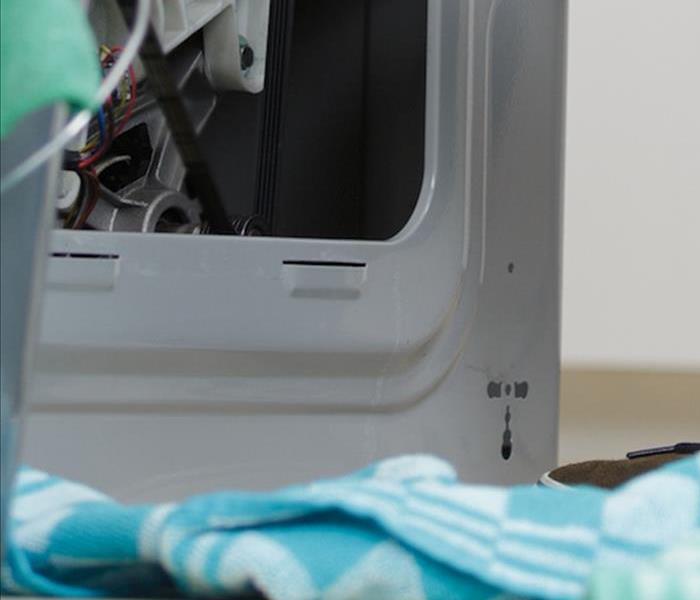 If your appliance causes water damage at your home, SERVPRO® of The Woodlands/Conroe can make the damage "Like it never even happened."
If your appliance causes water damage at your home, SERVPRO® of The Woodlands/Conroe can make the damage "Like it never even happened."
Water damage is a constant threat in our homes! Natural disasters and severe weather events can cause structural issues as well as water damage, and even something as simple as an appliance issue can leave you with a big mess on your hands.
Catching these issues quickly can help you avoid lasting damages.
An Appliance Malfunction
No one wants to think about it, but we all have nightmares of our appliances failing and causing a mess in our homes. In fact, it is one of the most common reasons for water damage among households in the Conroe community!
Any appliance that has a water line runs the risk of leaking or suffering some major malfunction.
If you notice a small drip coming from your washing machine or come home to a soaking wet carpet by your utility room, close off your water valves and turn off the power to any appliances near the water. Then give us a call! The faster we can respond to your emergency, the better chance you have of avoiding warped walls and floors and other costly damages.
Severe Weather and Flooding
Water damage can also occur due to any sort of weather event! When a severe storm rolls through town, it can cause flash flooding issues or lead to water backing up into your basement.
One way to avoid this is to invest in a sump pump for your lowest level. A sump pump works to pull water away from your foundation and basement, keeping your floors and walls nice and dry.
In addition, flying debris or a tornado can cause structural damage to your home, which can cause water damage if parts of your home are exposed to the elements.
In this scenario, make sure everyone in your family is safe and accounted for after the storm and then get us on the phone. Moisture can seep into many different areas, and the longer you wait to take action, you run the risk of mold and mildew on top of everything else.
How We Can Help
When it comes to water damage restoration, we know a thing or two! That is why our team should be your first phone call the moment you discover water damage anywhere in your home or property. We will work with you to create a full restoration plan, and then we will hit the road on our way to you.
We work hard to remove all of your fragile possessions and start by drying out as much of the water as we can. Our first goal is to save and recover as much as possible!
Once everything is removed, we bring in industry-leading drying equipment to make sure every inch of water is dried up. After that, we can address the necessary repairs and do whatever is required to return your home back to its pre-disaster state. We have your back no matter what water disaster you are facing.
Water can be very damaging to your home. Contact us for help with your recovery.
Signs of a Sewage Backup
12/9/2022 (Permalink)
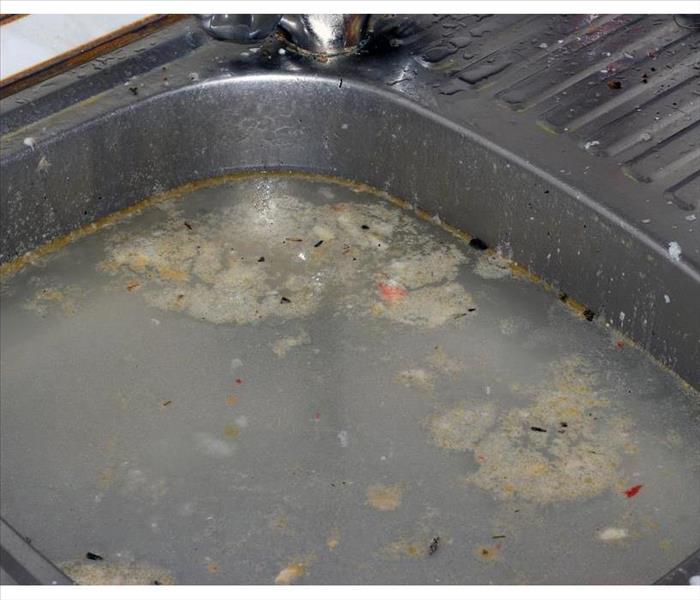 If your sink starts to overflow is a sign that you have sewage backup.
If your sink starts to overflow is a sign that you have sewage backup.
Sewage backups happen when the wastewater pipes leading from your house clog or overflow. In many cases, this can lead to severe water damage for your home. If you suspect that your sewage system is backing up, there are a few signs that can help alert you to the problem.
Most Common Type of Sewage Backups
There are many reasons for a sewage backup. The most common cause is clogged drains, particularly in older homes. Overflowing toilets and broken pipes are also common causes of sewage backups. Other causes include underground leaks from running water or rainfall, rotted pipes and cracked pipe joints or walls. Leaking underground sprinkler systems can also be a culprit if they're not maintained properly. Here are some other signs of sewage backup:
Foul odors
Sewage backups can cause foul odors and overflow. If you notice a sewage backup, it's likely that your toilet will overflow and/or the sink will begin to overflow. Because of this, it's important to check on these areas regularly for any signs of a backup or spillage.
Backed Up Sink Drains
One of the first signs of a sewage backup is an increase in water flowing from your sink drains, especially if it's not clear and you're noticing bubbles or air. You should call a professional plumber as soon as you see this happen, because if you wait too long, it can cause damage to your home.
Water Pooling in Your Yard
If you notice water pooling on your lawn or in your yard, it's likely that there is a sewage backup. This can be due to a variety of reasons, including faulty plumbing lines, blocked sewer lines and clogged drains. The presence of the following signs may indicate that there is a sewage backup:
- Water leaking from the ground
- Water leaking from downspouts
- Water leaking from rain gutters
- Water leaking from the roof
- Water leaking from the foundation
- Water leaking from inside walls
Avoiding Backups
You can avoid most sewage backup issues by checking for them regularly. To check for a leak, you'll need to inspect your plumbing system regularly. Use a flashlight and probe to find signs of water damage or discoloration in the walls or flooring of your basement, especially near pipes and drains.
To check for plumbing issues, you'll need to look at your toilet flange (the part that connects the toilet base with the floor). Look at all sides of it and make sure there is no corrosion on any side of it. If there is corrosion, replace it immediately!
Call the Professionals
If you notice any of these symptoms, call SERVPRO of The Woodlands/Conroe. We have the equipment and experience to clean your home's sewage backup. Our technicians use the appropriate tools and methods for each job.
If you've noticed a sewage backup in your Conroe,TX home or business, make sure to contact a professional right away. A backup can be dangerous and costly, so call for help as soon as possible.
Do's and Don'ts After Water Damage
11/9/2022 (Permalink)
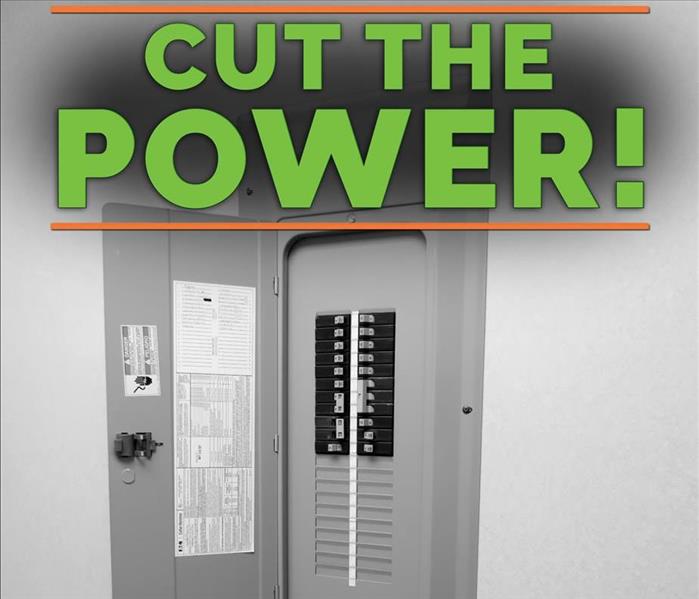 Make sure to turn off the electricity to avoid shocks or fires.
Make sure to turn off the electricity to avoid shocks or fires.
Tips On Handling the Aftermath Of a Flood Or Water Damage
The moment you realize your home has been damaged by water, it's natural to feel shocked and panicked. Luckily, there are things you can do to help protect your property and get back on track as quickly as possible. Check out this handy guide for tips on handling the aftermath of a flood or other water-related incident:
Do: Shut off the electricity if you can safely do so.
Cut power to wet areas of your home, especially if water is standing in puddles. If you see a wall outlet or switch that is wet or has been submerged in water, shut it off at the main circuit breaker box or fuse box. You should also turn off any appliances that were turned on when your home flooded and are still plugged into an outlet (e.g., a coffee maker).
Don't: Use a plugged-in electrical appliance while standing in water or on a wet floor, even with rubber-soled shoes on.
This may sound like common sense, but we've all done it at some point—you've been cooking dinner, and the phone rings, so you set the pan down just long enough to pick it up. Or maybe you're working on an assignment for class when your computer dies and you feel like running downstairs to charge it for five minutes before going back to work.
Regardless of whether you're using a big appliance or something small (like an alarm clock), plugging in any electrical device while standing in water can pose serious risks of electrocution—and if there's one thing we've learned over our many years of working with H2O and electricity, it's this: water + electricity = bad idea.
Do: Call an electrician right away.
If you have any concerns about the electrical circuits in your home, call an electrician right away. If the power has been turned off and on again, it's critical to inspect for damage and safety issues. The National Fire Protection Association recommends that homeowners do not turn their electricity back on until they've checked for fire hazards like cracks or frayed wires, as well as moisture damage that could cause mold growth in the future.
Do: Mop up all touchable surfaces such as walls and floors to get rid of excess moisture.
This will prevent mold or bacteria growth in your home, which could cause structural problems if left untreated. Avoid using a vacuum cleaner to clean up water damage because it can suck up small particles of dirt and debris. Also, avoid using a power washer to clean up water damage as this may spread the problem into other areas of your home if not done correctly.
Don't: Go into rooms with standing water while barefoot.
You should also avoid going into any rooms with standing water, areas that have wet carpets or floors, and any area that's damp. The same goes for walls. If you find yourself entering an area and feel as though there may be moisture in the air and on your skin, don't stop to check—just leave immediately.
In conclusion, water damage can be traumatic. However, the most important thing is to not panic and act quickly. You should always shut off the power when you see signs of water damage so that you don’t get electrocuted by an electrical appliance that’s been submerged in water. If you have any doubts about whether your electrical system has been damaged or not, call an electrician right away.
3 Tips for Preventing Plumbing Problems
7/23/2022 (Permalink)
 Regular inspection is key to finding and stopping a plumbing issue
Regular inspection is key to finding and stopping a plumbing issue
Three Ways To Avoid Plumbing Issues
Unwanted water, in the form of natural disasters or plumbing problems, can cause major damage. As a business owner, you strive to keep your building in good condition by performing regular maintenance. Water issues can quickly become costly repairs; therefore, it’s wise to be proactive about preventing issues. Here are three tips for preventing plumbing complications.
1. Delegate
One of the best things you can do as a manager or business owner is delegate responsibilities. Preventing major water damage involves ongoing inspection and maintenance. You simply don’t have time to handle this job on your own. Hire a maintenance manager and staff to oversee all items related to facility maintenance. Having individuals assigned to prevent plumbing problems will save your The Woodlands, TX, company money in the long run.
2. Educate
Once you’ve hired a maintenance manager or team, it’s important to provide training and education. Employees must know the common areas to check for plumbing issues and understand that it’s critical to fix a broken pipe, check for water spots and investigate low water pressure. All of these instances, and more, indicate a potential water problem.
3. Inspect
Regular inspection is key to finding and stopping a plumbing issue. Some of the areas that should be regularly inspected include:
- Toilets, sinks and showers
- Underneath sinks
- Water heaters
- Ceilings
- Water main
- Anywhere with exposed water pipes
- The ground outside, especially near sewer pipes
Your maintenance staff should be trained to frequently inspect these areas, as well as any other plumbing areas specific to your property. It’s also wise to have the contact information available for a water damage restoration company. Trained restoration specialists are Faster to Any Size Disaster and can restore your property quickly and correctly.
Plumbing problems can quickly cause expensive water damage. Be proactive in preventing issues by delegating responsibilities, educating employees, and inspecting your building on a regular basis.
5 Ways To Prevent Frozen Pipes
3/2/2022 (Permalink)
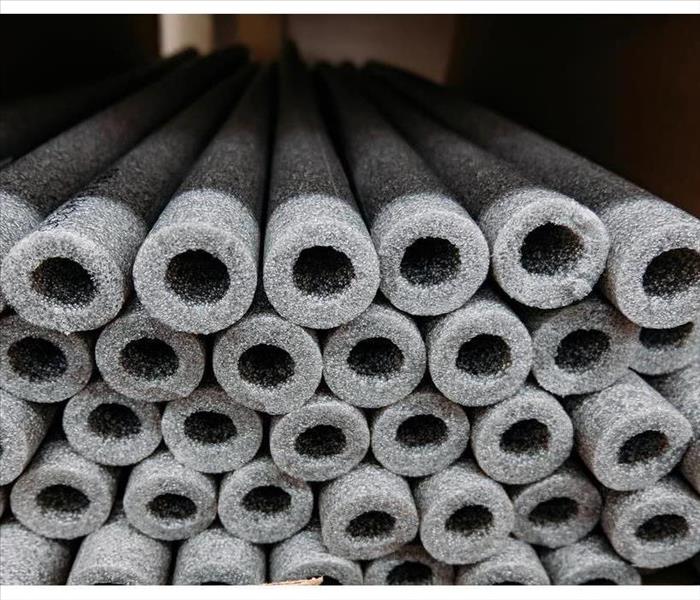 Insulate your pipes
Insulate your pipes
Make Sure Your Business Is Ready For Cold Season
The snow and holidays of winter can make it a fun season for many, but it can be less so for business owners with unprepared plumbing. Indeed, freezing temperatures are often a leading cause of broken pipes. For this reason, you should take steps now to make sure your commercial property is ready for the cold season. If you want to reduce the chances of needing the help of a water damage remediation expert, consider the following ways you can prepare.
1. Keep the Water On
Even if it might cost you more with energy bills this winter, spending the extra money can be worth it. By keeping some faucets turned on, you can allow water to continuously flow. This can prevent lines from freezing.
2. Turn Up the Thermostat
In order to keep pipes warm, you need to keep the building warm. Even when you are not open, make sure you keep the thermostat set above 55 degrees Fahrenheit.
3. Close the Doors and Windows
Another way to minimize your risk of an expensive water cleanup is by ensuring you close doors and windows. This includes any basement or garage doors as well. If there is anywhere frigid air can seep in, it can lead to one of the most common causes of frozen pipes which often results in water damage.
4. Open Backroom Storage and Cabinets
While you are closing your doors, you may want to open backroom storage and cabinets that surround plumbing. Doing this can allow warm building air to find its way into the enclosures.
5. Insulate Your Pipes
One of the most straightforward ways you can prevent freezing of your pipes is by making sure you insulate them well. A good way to do this is by installing heat tape. You can ask a professional if you need assistance.
When it comes to preventing frozen pipes and the subsequent water damage that can come with them, there are several things you can do. With a little planning, you can rest easy knowing your business is ready for the winter.
Tips for Cleaning Up Water Damage From Broken Pipes
2/25/2022 (Permalink)
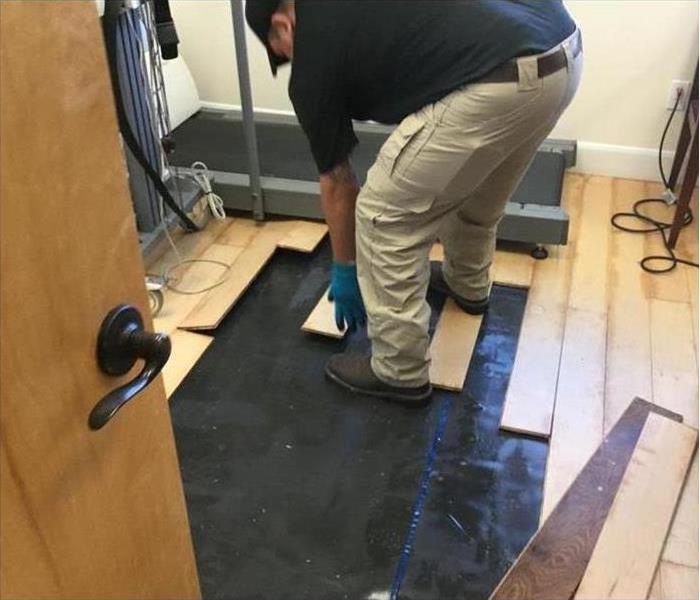 Water-damaged flooring in a Conroe, TX property.
Water-damaged flooring in a Conroe, TX property.
Water Cleanup Process
Water damage is a fact of life for homeowners. No matter how hard you work to maintain your property, eventually broken pipes, backed-up drains, or some other form of water damage will require cleanup. When the time comes and you have to deal with a minor emergency that has left your home in Conroe, TX, a little waterlogged, you need to know how to respond decisively to prevent continuing damage. Follow these tips to make sure you get the water cleanup process handled quickly.
- Turn off the water to prevent further flooding
- Remove dry and undamaged possessions from the affected area
- Contact a restoration cleaning service with water-damage certifications
- File a claim with your insurance company for covered damages
- Keep kids and pets away from the area
If it is possible to safely turn off electricity in the flooded rooms, it can be a good idea, especially if you have appliances plugged in and underwater. Make sure you don’t step into standing water where powered appliances are submerged to minimize the risk of shock.
Working With Water-Damage Specialists
Sometimes, homeowners are tempted to attempt cleanup themselves. While there are a number of home improvement and repair projects that can be realized efficiently and inexpensively with a do-it-yourself approach, it’s important to understand that water clean-up from broken pipes and other plumbing emergencies really needs a professional approach.
When water damages a home, specialized tools are needed to properly affect cleanup. These tools allow for the drying and cleaning of home furnishings and building features alike, and they work more thoroughly and quickly than options available to homeowners. Quick action is essential to minimize the damage from water during emergencies. Specialists also carry certifications for mold abatement and other water-related cleanup protocols.
Wrapping Up
Water damage from broken pipes and other home emergencies can cause serious problems for homes and homeowners in Conroe, TX. Make sure you work with specialists in water cleanup to preserve and clean your property when you have residential water emergencies.
The Rising Waters: Toilet Overflow and What To Do About It
1/30/2022 (Permalink)
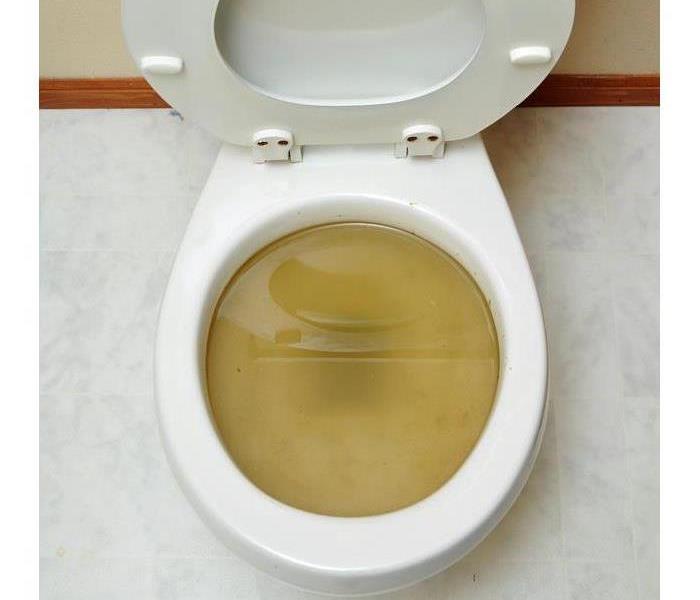 Sewer damage in New Caney, TX, can be incredibly problematic.
Sewer damage in New Caney, TX, can be incredibly problematic.
Sewer damage in New Caney, TX, can be incredibly problematic, and quickly getting the situation under control is often imperative. You should know what can cause a flooded toilet and what you should do after it occurs to quickly clean up and restore your home to its natural state.
Understanding Why Toilet Overflow Occurs
Unfortunately, this is not an uncommon issue in homes. However, when you know what the potential causes are, it puts you in a position to take better preventative measures. The following may cause toilet overflow in your home:
- A drain line becomes clogged.
- The septic field is not percolating.
- Sewer damage occurs somewhere in the system’s lines due to issues such as tree roots or foreign objects causing a clog.
- A low flow toilet is not able to handle the demands of your household.
- The trap between the drain line and the toilet bowl becomes blocked.
Cleaning Up Toilet Overflow
The first step is to get rid of any water that may have accumulated in the affected space. Once this is gone, use low-suds soap and warm water to thoroughly clean all elements of the space. Once this is done, use a disinfectant and go over all of the surfaces you have cleaned to reduce any lingering contaminants and impurities.
Once you complete the cleanup process, make sure that you are taking steps to prevent this problem from recurring. Be mindful of how much toilet paper you are using, never flush feminine hygiene products and make sure that small objects do not accidentally get into your toilet and flushed down.
With this information about toilet overflow, you can be better prepared to deal with this type of situation. Should you experience sewer damage, it is generally a good idea to reach out to a sewage company to ensure that the restoration process is done safely and correctly.





 24/7 Emergency Service
24/7 Emergency Service








